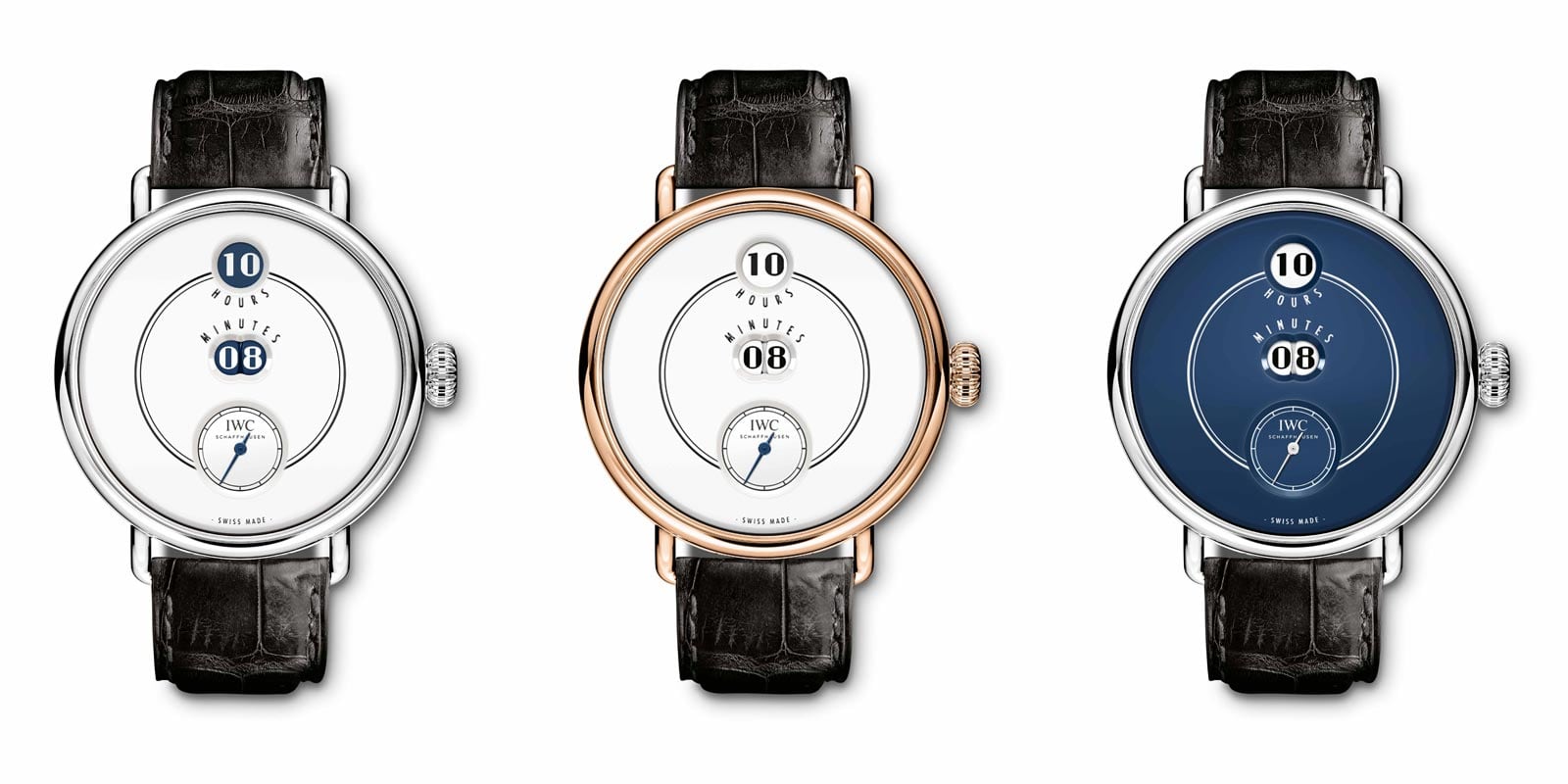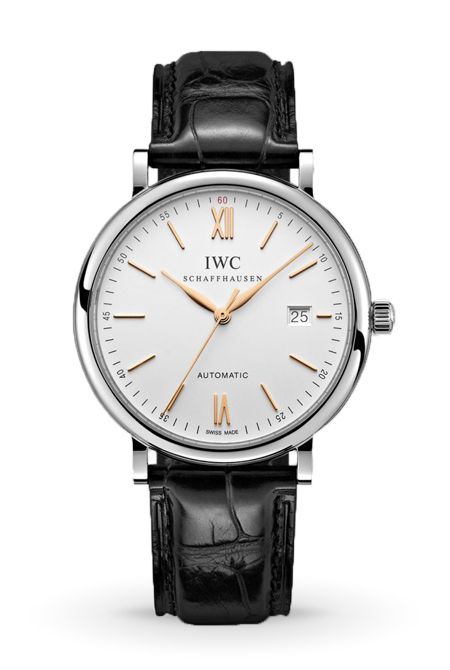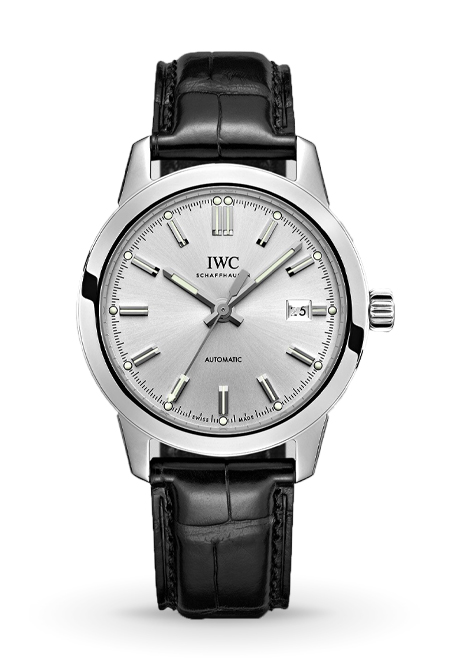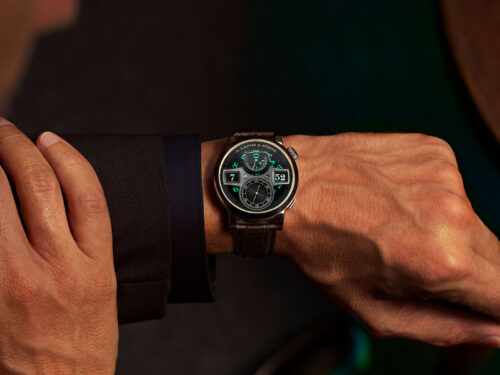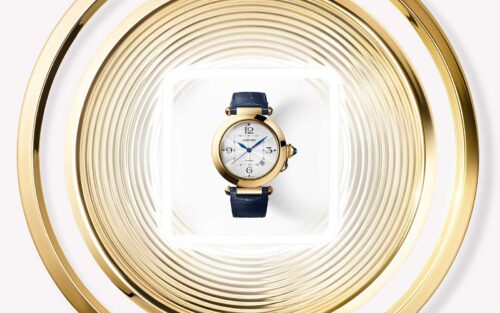Introducing the IWC Tribute to Pallweber Edition 150 years
Reviving an icon from the past.
This year marks 150 years since the founding of the International Watch Company, or IWC, as it is better known today. To celebrate this monumental milestone, the brand unveiled a special jubilee collection at SIHH 2018 in January, featuring no less than 27 new limited-edition references with white or blue lacquered dials and two new in-house calibres.
We’ll look at some of those other models in more detail in later articles, but today we’re going to focus on just one: the IWC Tribute to Pallweber Edition “150 years”, the first wristwatch in the brand’s history with a jumping-numeral display for the hours and minutes.
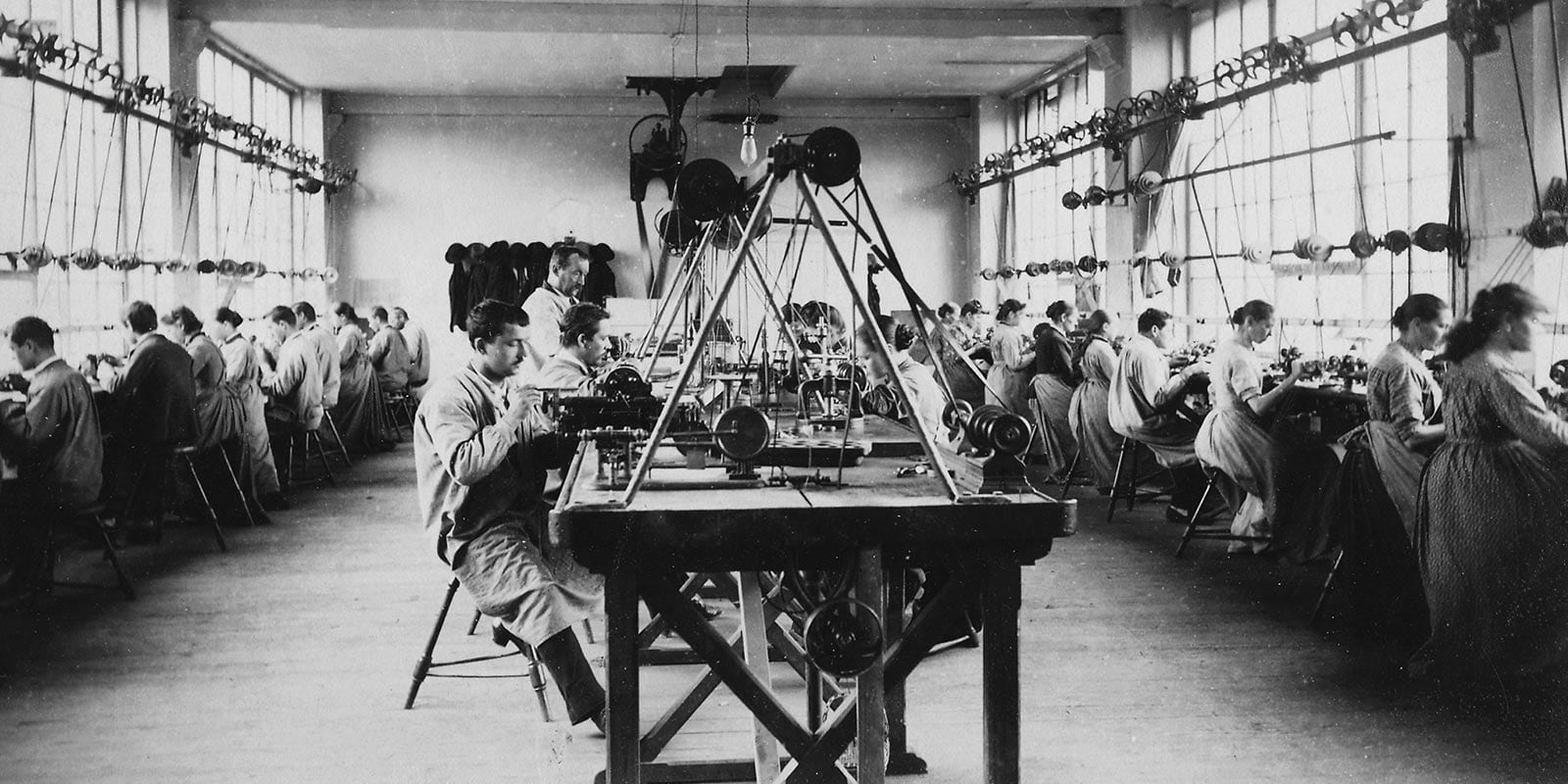
An Icon from the Past
To create this remarkable new timepiece, IWC looked deep into its past for inspiration. As you may know, the company was established in Schaffhausen, Switzerland in 1868. What you may not realise, however, is that unlike most of the other major, high-end Swiss and German watch manufacturers, IWC was not established by European or English founders, but rather by an American. A watchmaking pioneer named Florentine Ariosto Jones.
A gifted entrepreneur and watchmaker, he saw an opportunity to combine American manufacturing technology with skilled Swiss craftsmanship to create top-quality pocket watch movements for the US market.
With funding from shareholders back home, he wasted no time setting up heavily industrialised manufacturing infrastructure in Schaffhausen, capable of producing over 10,000 movements per year.
Twelve years later, in 1880, the Rauschenbachs, a Schaffhausen family of industrialists, took over the entire company and started selling its watches worldwide.
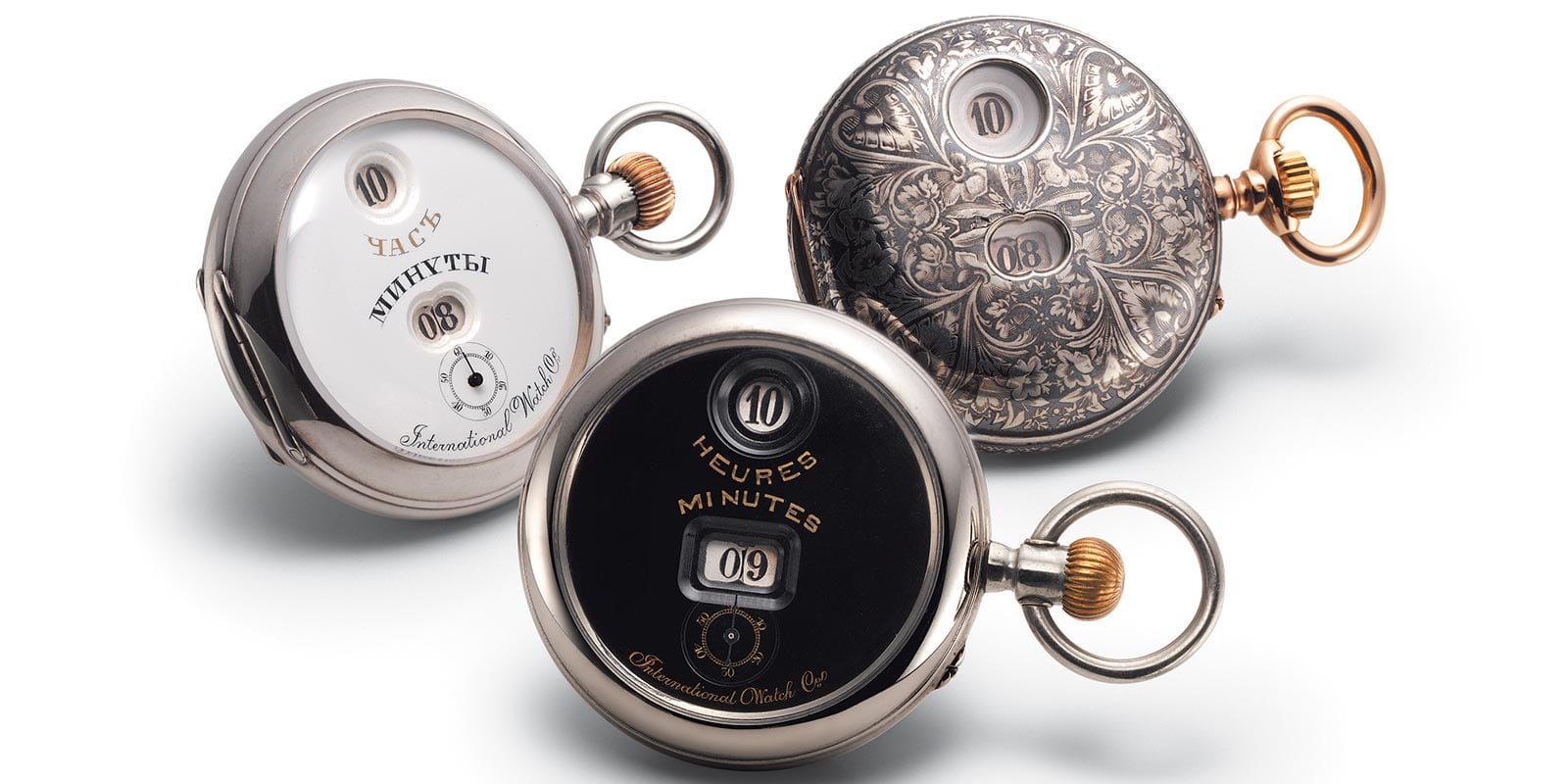
At the helm was Johannes Rauschenbach-Schenk, who oversaw continued improvements in the manufacturing process as well as the design of new watch movements. During this time, he came across the jumping numeral timepiece, invented by Josef Pallweber, a watchmaker in Salzburg.
It featured a digital display for both the hours and minutes, shown on separate rotating discs, with the running seconds displayed on a sub-dial at six o’clock. All the indications were arranged in a line down the centre of the case.
Fascinated by this futuristic design, Rauschenbach-Schenk quickly moved to secure the patent for the innovative technology behind it.
Shortly thereafter, in 1884, IWC began producing the first Pallweber pocket watches with digital displays for the hours and minutes. Initially, the concept proved quite popular, with the company manufacturing around 20,000 of the handless watches over a six-year period before consumer interest began to wane and production ceased. Now, some 130 years later, IWC has brought the Pallweber back to life in spectacular fashion, only this time the brand has reimagined it as a truly incredible wristwatch.
The IWC Tribute to Pallweber Edition “150 years”
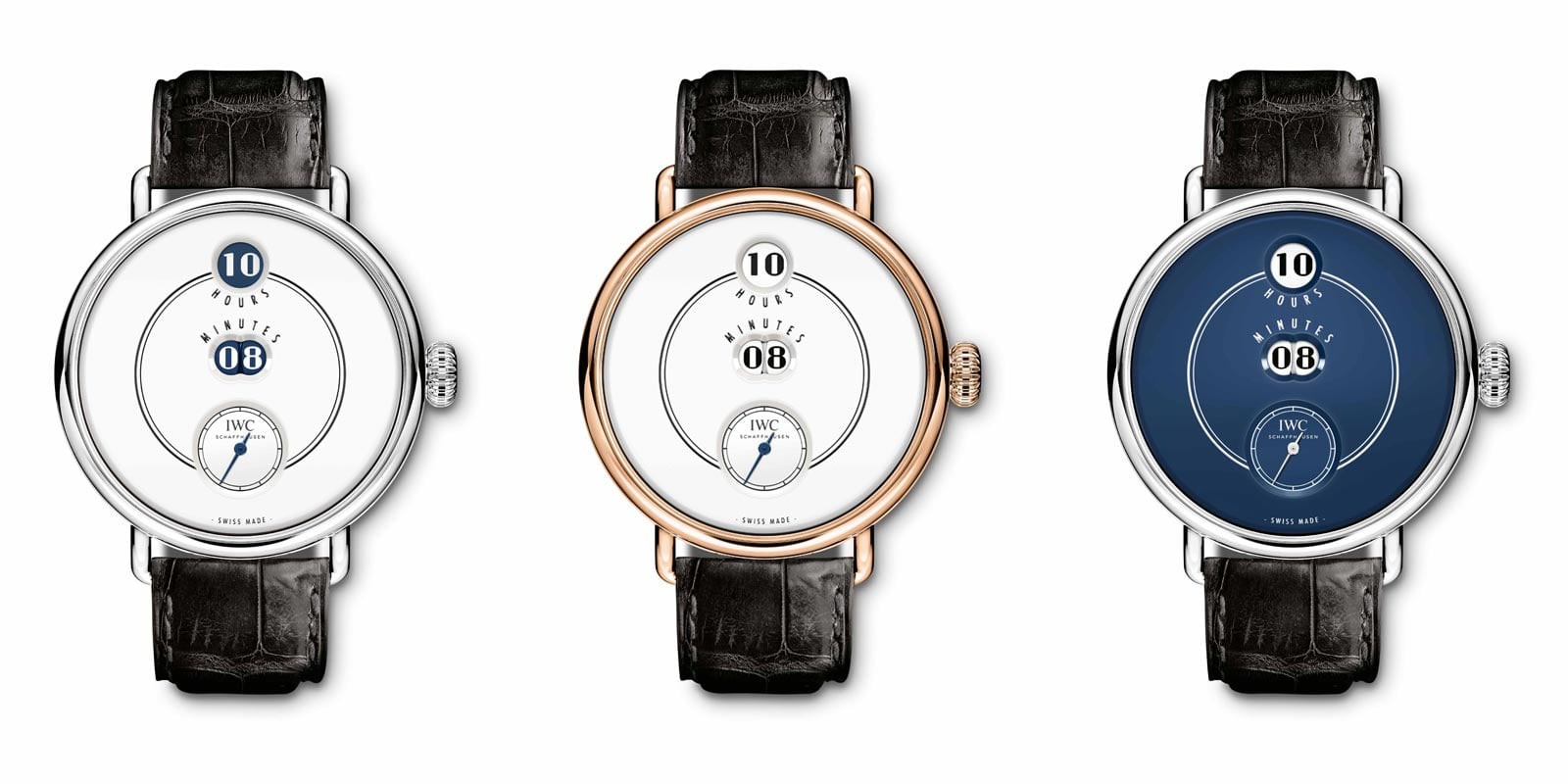
Although the IWC Tribute to Pallweber Edition 150 years has been designed to look like it was made century or two ago, it boasts the latest cutting edge-technology and Swiss know-how. The 45mm round, polished case is reminiscent of a 19th-century pocket watch, right down to the wired lugs, which give the impression of being added later to convert it to a wrist watch (a popular practice in the early 20th-century). Once you put it on, however, it becomes immediately obvious that this watch was always intended to be worn on the wrist. Comfortable and surprisingly compact, it measures just 12mm thick.
Likewise, the stunning lacquered dial emulates the texture and colour of the enamel dials used on the original Pallweber pocket watches. To create the perfect finish, the dials are coated with up to 12 layers of high-quality lacquer, flat-polished, brushed and then imprinted several times to create the attractive 3D inscriptions.
Elegant and refined, this unique dial is far more eye-catching than its simple design might initially suggest.
The real highlight of the IWC Tribute to Pallweber Edition 150 years, of course, is its unusual time display, which is broken down into three distinctly separate areas. At the top, just beneath 12 o’clock is the first digital display for the jumping hours, shown on a single disc through a round aperture. In the middle of the dial is the second aperture, which reveals the jumping minutes shown on two separate discs. Finally, just below that is the small seconds, displayed on its own separate sub dial, which plays host to the only traditional watch hand on the entire face. This layout is virtually identical to the original Pallweber pocket watches and is just as striking now as it was back then.
A Dedicated Movement
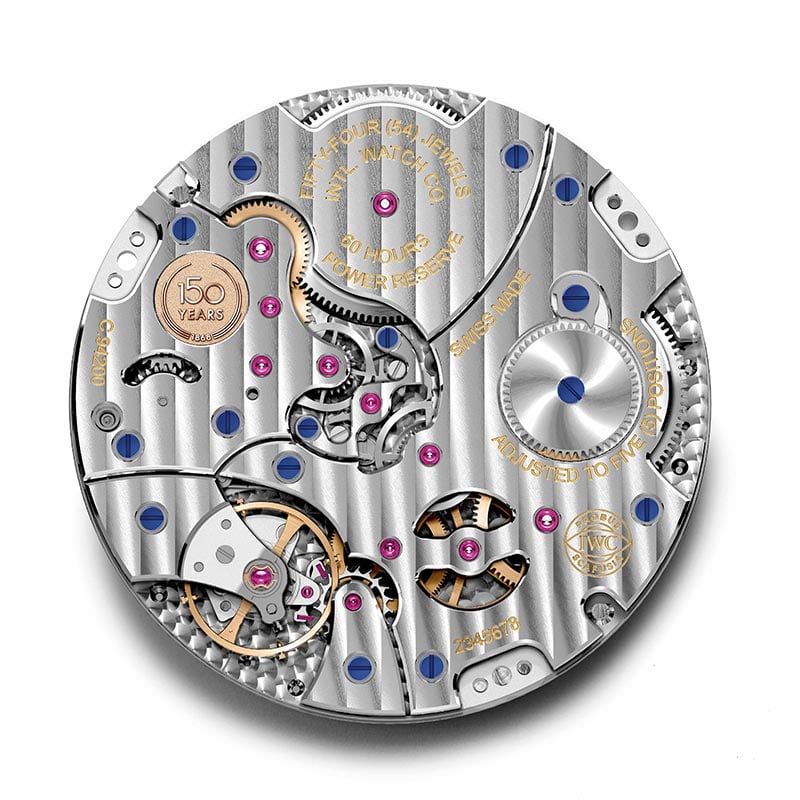
To animate this display of jumping hours and minutes, the first of its kind to feature in a wristwatch in IWC’s history, the brand had to develop an entirely new in-house movement. Christened the Calibre 94200, it is unique to the Tribute to Pallweber Edition 150 years and features some patent pending technology of its own. Comprised of 290 individual parts, it is the result of five years of research and development and addresses some of the fundamental shortcomings of the original Pallweber design.
You see, back then, the movements in the Pallweber pocket watches were equipped with cogwheels with unequally spaced teeth, which were used to advance the display discs. When a gap between the teeth occurred, the power from the mainspring was transferred directly to the star-wheel on the one-minute disc. This caused undue wear and tear on the movements however, and also resulted in fluctuations in balance amplitude, not to mention a fairly limited power reserve.
To overcome these challenges, IWC has created a mechanical movement with a double-barrel design with two separate gear trains – one for the timekeeping, and one for the display, for which it has applied for a patent. Connecting the two barrels is a release mechanism, mounted on the third wheel. Every 60 seconds, the mechanism releases the wheel train and then locks it again immediately. A cam fixed to the pinion raises the release lever from one side. After every completed minute, the lever jumps up and releases the unlocking wheel connected to the wheel train of the display discs. It jumps forward and advances the one-minute disc by a single position.
The procedure is repeated nine times. After the tenth switching sequence, a runner on the one-minute disc engages with the Geneva drive on the ten-minute disc and advances it. A pin located on the underside rotates with the intermediate Geneva wheel. When the ten-minute disc is on “5” and the one-minute disc on “9”, the intermediate Geneva wheel advances the hour ring to the next position. Of course, on the dial side, this wonderfully complex ballet plays out seamlessly, with the audible clicking sounds accompanying every jump the only reminder that a complex mechanical heart beats beneath.
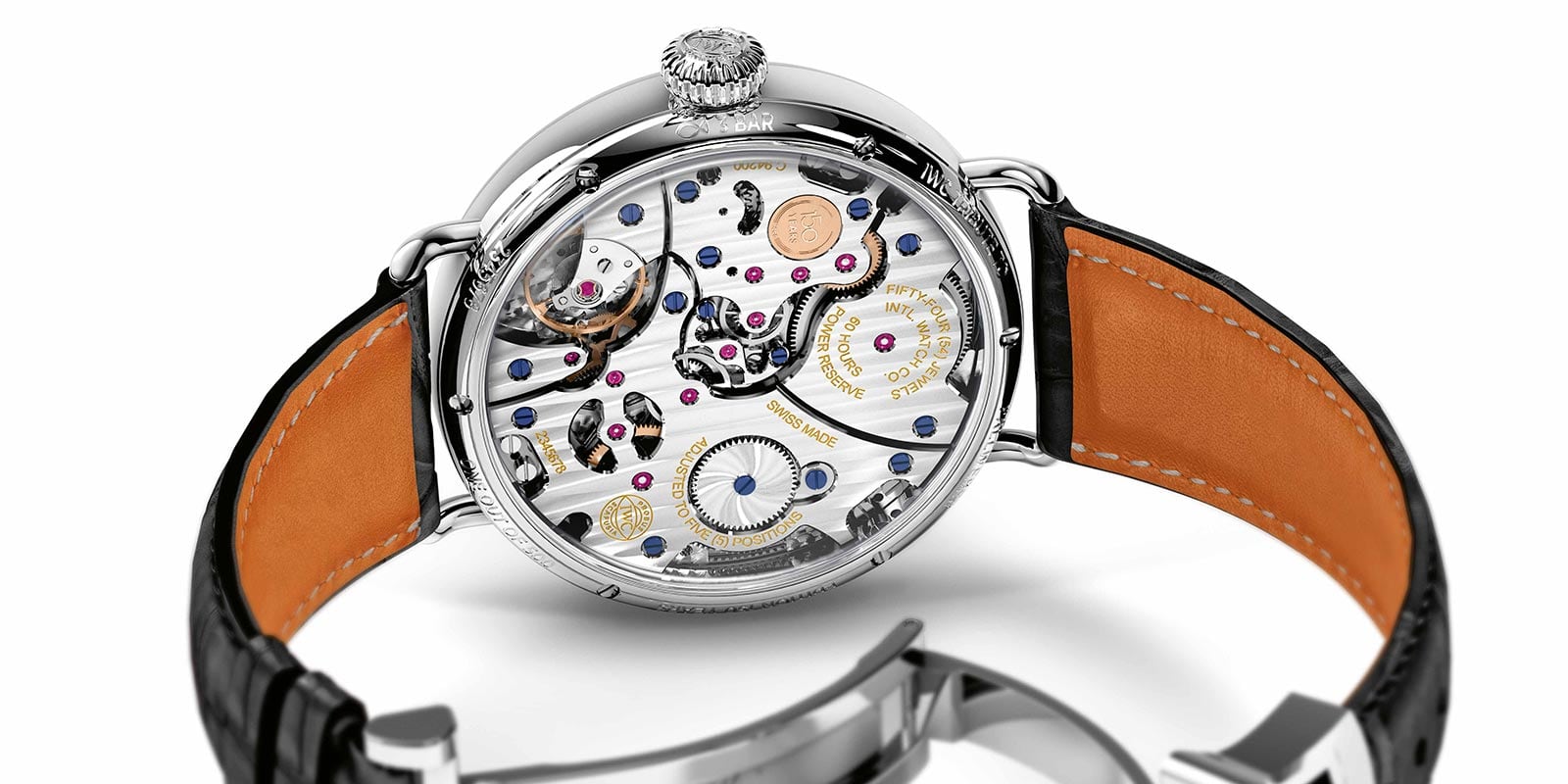
Visible through the sapphire caseback, the movement is finished beautifully in the trademark IWC style. Carrying on the vintage pocket watch theme, it is decorated with thin Geneva stripes, bevelled angles and blued screws. An 18k gold medallion on one of the bridges marks the 150th anniversary of the brand. Operating at a frequency of 4hz, it offers a power reserve of 60 hours, made possible thanks to the separate barrel and gear-train design.
Offered in three different metals, rose gold, platinum and stainless steel, each a limited edition, the IWC Tribute to Pallweber Edition 150 years is most certain to become a coveted collector’s piece. To discuss the possibility of acquiring one for your collection, please contact us immediately to express your interest.









 Rolex
Rolex A. Lange & Söhne
A. Lange & Söhne Blancpain
Blancpain Breguet
Breguet Breitling
Breitling Cartier
Cartier Hublot
Hublot Vacheron Constantin
Vacheron Constantin IWC Schaffhausen
IWC Schaffhausen Jaeger-LeCoultre
Jaeger-LeCoultre OMEGA
OMEGA Panerai
Panerai Roger Dubuis
Roger Dubuis TAG Heuer
TAG Heuer Tudor
Tudor FOPE
FOPE Agresti
Agresti L’Épée 1839
L’Épée 1839



